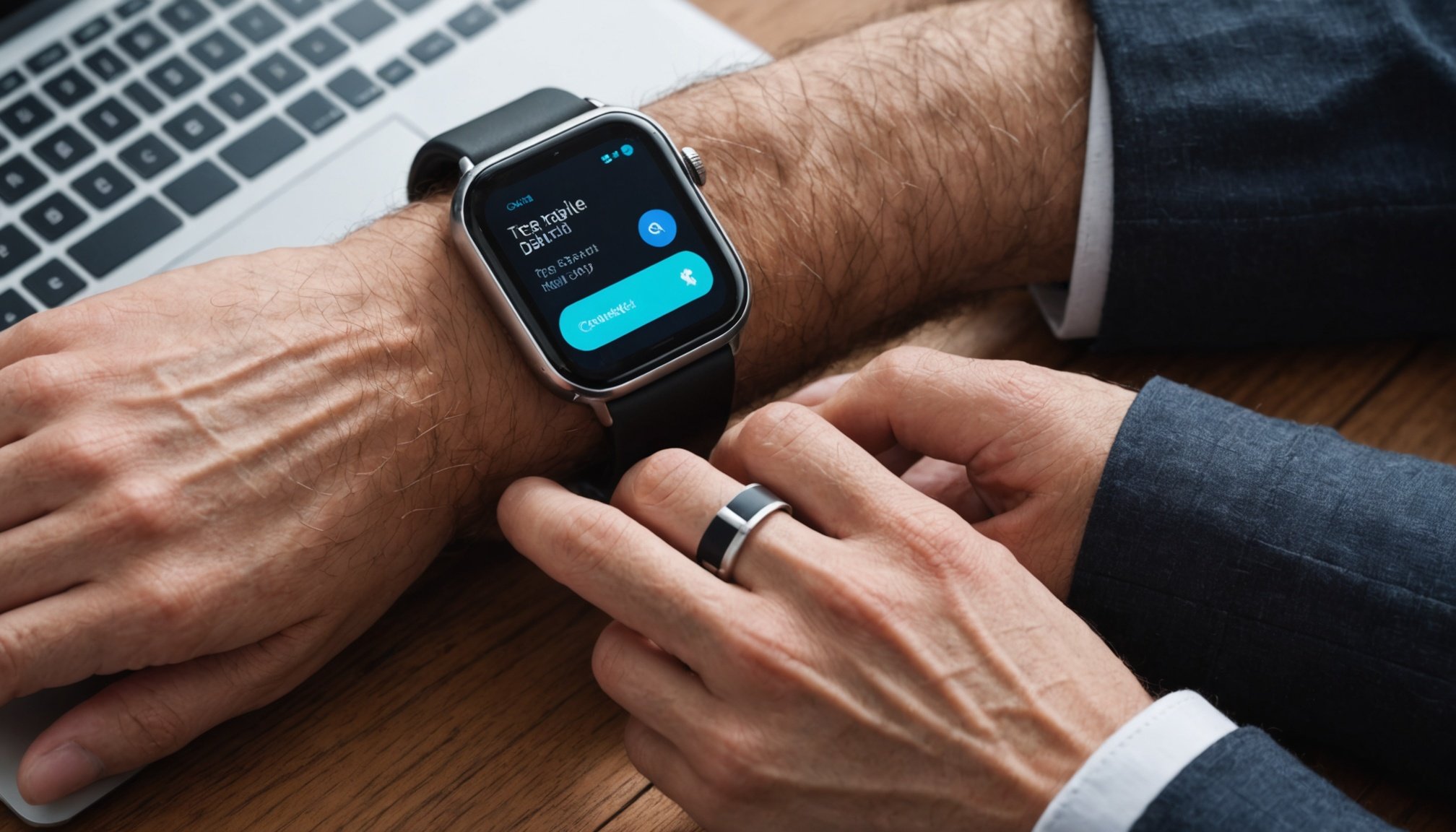Understanding Wearable Health Technology and Personal Data Risks
Wearable health technology, including fitness trackers and smartwatches, has revolutionized how we monitor personal well-being. These devices collect a plethora of data—from heart rate to sleep patterns, providing valuable insights into our health. However, the vast data collection capabilities of wearable tech come with significant personal data risks.
One of the crucial concerns is data privacy. Wearable devices continuously gather sensitive information which, if not correctly managed, may lead to breaches where one’s private health data could be exposed to unauthorized parties. This risk is amplified as data is often transferred to the cloud, making it vulnerable to hackers. Understanding potential vulnerabilities in these systems is essential for safeguarding personal information.
In the same genre : Unlocking Personalized Education: A Step-by-Step Guide to Building an AI-Driven Learning System
Common risks associated with wearable health technology include:
- Unauthorized access to health data by third parties.
- Insufficient encryption protecting stored or transmitted information.
- Lack of user consent for data collection and sharing.
Recognising these risks highlights the importance of robust security measures and policies for data protection. As technology evolves, so does the challenge of maintaining privacy. Users are encouraged to stay informed about how their data is handled and take proactive steps to secure their digital health identity.
Have you seen this : Boost Your NLP Models: Proven Techniques to Improve Accuracy
Best Practices for Data Security in Wearable Devices
In the modern age of technology, ensuring data security in wearable devices is paramount. These devices collect sensitive personal information, making them potential targets for breaches.
One key practice is regularly updating your device’s software and firmware. Manufacturers frequently release updates to patch vulnerabilities, enhancing security measures. Missing these updates could leave your wearable device exposed to potential threats.
Another crucial measure is utilizing strong, unique passwords for device accounts. A robust password includes a combination of letters, numbers, and special characters. Avoid using easily guessable information, like birthdays or common words. This simple step can significantly impede unauthorized access to personal data.
Moreover, enabling two-factor authentication adds an additional layer of security. This method requires users to verify their identity through a second device or account, thereby reducing the risk of unauthorized access.
- Regular updates and patches
- Strong, unique passwords
- Two-factor authentication
By adhering to these best practices, you can effectively protect the sensitive information stored on wearable devices. This not only safeguards personal data but also helps maintain the integrity and reliability of the wearable technology.
Privacy Settings and Customization
In today’s digital world, having user control over your privacy settings is essential. This allows individuals to manage and secure their data effectively.
Adjusting Default Privacy Settings
Upon installing any app, the default privacy settings are often predetermined. It’s imperative to review these settings and adjust them to align better with your privacy preferences. Start by assessing what type of data the app is collecting, and determine whether this aligns with your comfort level.
Customizing Data-Sharing Options
Data-sharing with third-party applications is a common practice, yet it comes with privacy implications. Customization of these options gives you authority over what data, if any, is shared. To do so, navigate to the app’s settings menu and explore the available data-sharing controls. Prioritize sharing the least amount of personal information possible, ensuring your details remain protected.
Reviewing App Permissions Regularly
Routine checks of app permissions are crucial. Technology advances rapidly, and apps often update their permissions without notifying users. Reviewing these changes ensures minimal data exposure and prevents unnecessary data sharing. Create a reminder to revisit app permissions periodically, maintaining a secure environment for your personal information.
By understanding and customising privacy settings, users gain more control and safeguard their personal data.
Data Encryption Techniques
In the digital age, data encryption plays a vital role in protecting personal and sensitive information from unauthorized access. Recognizing the significance of encryption is crucial, especially as we become increasingly reliant on technology. At its core, data encryption is the process of converting information into a code to prevent unauthorized access. This ensures that only those with the correct decryption key can read the data.
When discussing encryption, it’s important to understand common encryption protocols. These protocols include popular techniques like AES (Advanced Encryption Standard) and RSA (Rivest-Shamir-Adleman). AES is widely used for secure data transmission due to its robustness and efficiency, making it a common choice for various wearable technologies. RSA, on the other hand, is favored for its strong encryption capabilities, particularly in securing digital communications.
For those selecting wearable technologies, prioritizing devices with strong data encryption protocols is essential. Here are a few recommendations when considering such devices:
- Ensure the device uses industry-approved encryption standards.
- Verify that the manufacturer regularly updates the encryption protocols.
- Look for devices with a strong reputation for protecting user privacy.
By focusing on these aspects, users can safeguard their data, supporting secure interactions with their devices.
Choosing Secure Wearable Devices
When purchasing secure wearable devices, several important features should be considered to ensure data safety and reliability. First, look for devices with end-to-end encryption, which safeguards your personal information during transmission. Devices with robust authentication mechanisms, such as multi-factor authentication, add an extra layer of security, protecting your information from unauthorised access.
A thorough market analysis reveals that the top-rated secure wearable devices often belong to brands with a strong track record in data protection. These include companies that have implemented clear privacy policies and regularly update their security protocols to combat emerging threats. When comparing different devices, analysing expert reviews and user feedback can offer insights into the practical effectiveness of the safety features.
Brands like Apple, Fitbit, and Garmin have demonstrated a commitment to securing user data through regular updates and compliance with data protection regulations. By choosing wearable devices from these brands, you are more likely to benefit from reliable protection measures. To make an informed decision, it’s crucial to evaluate the security features in the context of your personal data privacy needs and how these features align with your wearable device usage.
Regulatory Practices and Compliance
Navigating the landscape of wearable health technology often leads us into the realm of regulatory practices. These practices are essential, as they ensure that technologies uphold standards for data compliance and user rights. A significant part of this is ensuring the protection of user data. Regulations like GDPR in Europe and HIPAA in the United States set stringent guidelines on how data should be processed, stored, and shared. These laws promote transparency, requiring companies to inform users about the use of their data.
User rights within these frameworks are robust. Users have the right to know what data is collected, the reasons for its collection, and how it’s used. They can also access and correct their data, enhancing their control over personal information. Wearable technology companies must design devices that respect these rights, making it a priority to incorporate privacy features.
Regulations impact how wearables handle data privacy. Compliance means enforcing data encryption, anonymization, and implementing strict access controls. This ensures user data remains secure and private. These measures foster user trust and encourage widespread adoption of wearables, aligning technology advancements with ethical standards. With regulations evolving, companies must stay informed and adapt, ensuring continued compliance and protection for users.
User Responsibilities in Data Protection
When it comes to data protection, your role as a user is crucial. Using wearable devices demands a proactive approach to safeguarding your information. It’s not only about technology but also about your personal accountability.
It’s essential for users to regularly monitor their data security features. How frequently do users check the security settings on their wearables? Every week or month, you should ensure that all software updates and security patches are installed. This regular check-up fortifies your device against potential security breaches, making sure that any vulnerability is promptly addressed.
Educating oneself about potential threats is equally important. What are the most prevalent risks associated with wearable devices? Users should be aware of phishing attempts, untrusted applications, and unsecured networks. There is a variety of resources available to assist users in understanding these threats better and adopting safe practices for data management. Staying informed can help mitigate risks.
Ultimately, taking these steps empowers users to take control of their data privacy actively. Understanding the significance of these responsibilities can greatly reduce the chances of data breaches and enhance your overall digital security while using wearables. Remember, protecting your data is an ongoing process that requires diligence and awareness.











